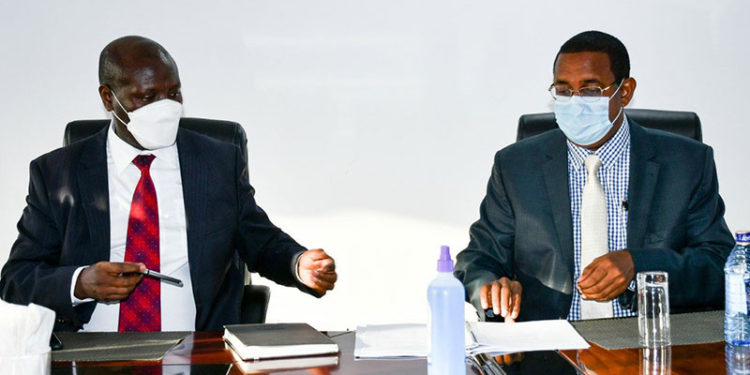Kenya National Highways Authority (KeNHA) and Frontier Counties Development Council (FCDC) signed an agreement for implementing the Horn of Africa Gateway Development Project (HoAGDP) this week. The signing was done in the presence of the World Bank, which is financing the project.
The signing ceremony which was attended by the CEO of FCDC Hon. Muhammed Guleid, KeNHA Director General Eng. Peter Mundinia and World Bank Team Task Force leader Josphat Sasia now set the pace of implementing the project.
This project is part of the government’s plan to upgrade a section of the Nairobi- Isiolo-Mandera road, which remains unpaved. Implementing the road will facilitate trade and transport for the Northern and North-Eastern regions.
Kenya secured approximately US$ 750M financing in form of a loan from the World Bank to facilitate the implementation of the first phase of the Horn of Africa Initiative Project, which seeks to boost regional integration and national development.
The project will see the upgrade of 365 kilometers of the 740-km Isiolo-Mandera road and 30 kilometers of spur roads besides laying a fiber optic cable along the 740-km corridor in the North-Eastern region.
It will also help provide basic socio-economic infrastructures such as border management systems and border posts for communities living along the corridor.
The loan is tapped from the World Bank’s International Development Association (IDA) portal whose lending terms range from partly grants to zero-interest loans with broad redemption periods. This aligns with the National Treasury change of stance, which has seen it concentrate on concessional loans over external commercial debt arrangements to lessen the debt burden in the country.
The Government in the LAPSSET Corridor Development Plan has divided the Northern Eastern region into nine (9) growth areas; Lamu Growth area,Garissa-Bura growth area, Wajir growth area, Moyale growth area, Lokichogio growth area, Turkana growth area, Isiolo-Meru Archers Post growth area and the Mwingi growth area.
Each of the growth areas has an identified set of economic activities and investment opportunities that will spur economic growth of the area and the Northern Eastern region. This includes Isiolo-Meru area being a logistics centre along the corridor and a resort city; Moyale, Wajir and Garissa-Bura growth areas mainly for the set-up of Export Processing zones for livestock and animal by-products.
Directly related to the Port is the potential of Isiolo, Lokichogio and Moyale for the set-up of Inland Container Depots, which will increase the transport efficiency, and facilitate cross- border trade with neighboring countries that will be linked firmly by the LAPSSET Corridor namely Southern Sudan and Ethiopia.
The LAPSSET corridor, therefore, can be visualized as a development corridor concept that can elevate a region to a certain level of development. This concept maximizes on a strategy that identifies areas with inherent growth potential for concentrating investment to stimulate growth. It is expected that public sector resources will be sourced to develop physical and social infrastructure to facilitate investment. To achieve such sped up integrated development, the government should ensure that enabling business environments that foster investment is provided for.





